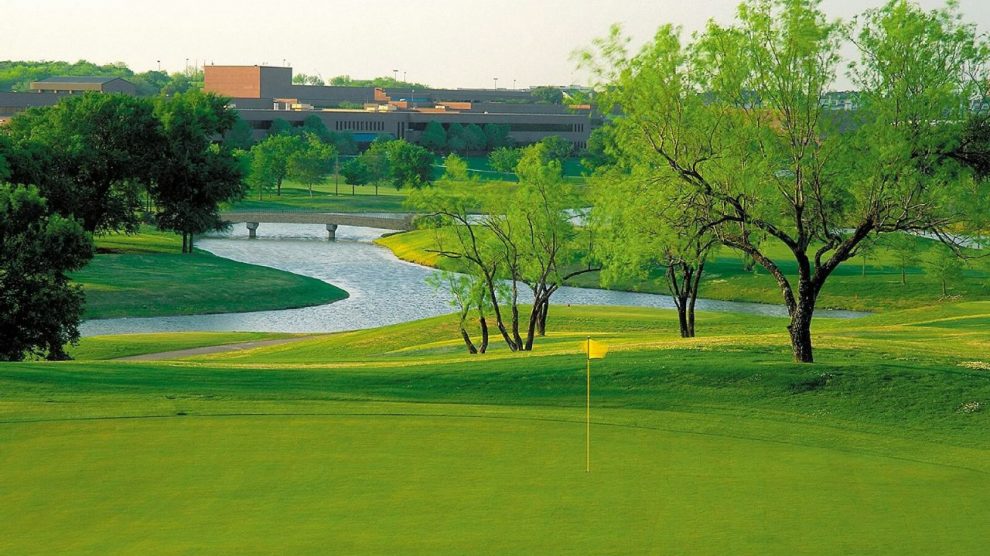After the most grueling non-major on the calendar, the PGA Tour moves back into Texas for the 35th and final time the AT&T Byron Nelson tournament will be at the TPC Four Seasons Resort in Irving, before it moves to Trinity Forest Golf Club in Dallas next year.
Originally designed in 1982 by Jay Morrish with player consultants Byron Nelson and Ben Crenshaw, the course was redesigned in 2007 by former PGA Tour and current Champions Tour player D.A. Weibring and his partner architect Steve Wolfard. PGA Tour player consultants were Harrison Frazar and J.J. Henry.
D.A. Weibring and Steve Wolford created large, undulating greens, encouraging players to use slopes to work their shots closer to the pin. With runoffs and closely mowed areas lurking just off the putting surface, players need to be wary of short-siding themselves. The duo also undertook extensive tree removal that brings creeks and ponds more into play. The final two holes provide the most dramatic water features on the property. The climactic finish draws the eye to ponds and waterfalls looking to distract players from their impending shots.
Holes to Watch
Hole 11 - Par, 323 Yards
This driveable par 4 offers the temptation to go for birdie. As most long-hitting pros will opt for more than last week’s new 12th at TPC Sawgrass. Multiple teeing grounds give the course setup team a plethora of options depending on the day and weather conditions. The fairway landing area is narrow and the green is large and inviting -- but pros have to avoid the tricky contouring and small bunkers guarding front right, left and back left.
Hole 16 - Par 5, 546 Yards
This hole rises in elevation from the tee box to the green. The bunkers along the left side and middle of the new fairway are more visible from the tee and require some skill to navigate around. A strategically place bunker in the middle of the fairway approximately 100 yards from the hole requires those shorter hitter to hit to a predetermined distance for a clean looking approach shot. New shaping and contouring around the green makes this hole one of the most challenging on the course.
Hole 17 - Par 3, 198 Yards
This signature hole’s tee box has been reshaped and stepped down to magnify the effect of the amphitheater design around a green. This seating area has been reshaped to allow players to feed their balls toward pin placements that tend to be near the water's edge.
Hole 18 - Par 4, 429 Yards
From high above the 17th green, a new 18th tee box has been repositioned to the east to take advantage of the natural contours of the fairway and to create a dramatic view of the four new lakes and a cascading waterfall that extends from the landing area to the green. The slight dogleg left fairway offers an exciting finishing hole that tempts player to go for a birdie. If you like pretty-but-unnatural water features, this is your hole.

